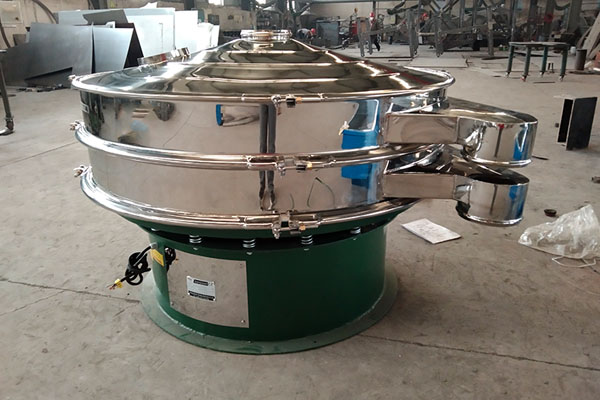
Vibrating Filter Sieve
Separate the solids or impurities from the liquid and slurry, increase the feed inlet, increase the feed amount, prevent liquid splashing, and be suitable for filtering various liquids.
Price: $400.00-$5000
Filter accuracy: 5 microns
Filter capacity: 1~5 tons/hour
Motor power: 0.25-3kw
What is a Vibrating Filter Sieve?
A Vibrating Filter Sieve is a device that uses a vibrating motor to drive a screen to generate high-frequency vibrations to achieve liquid and slurry screening and filtration. It can separate solid particles and liquids through screens of different mesh sizes (usually 20-500 meshes). It can be used to process low-viscosity liquids (such as juice and paint) to high-viscosity slurries (such as ceramic glazes and pulp). The processing capacity ranges from 700kg/h for a 450-type screen to 7500kg/h for a large-scale screen. It is made of 304/316 stainless steel or polypropylene to meet food and anti-corrosion requirements. It effectively solves the problem of screen blocking through three-dimensional vibration or high-frequency vibration. It has the dual functions of filtering and impurity removal and particle size classification. It is an indispensable precision screening solution for modern production.
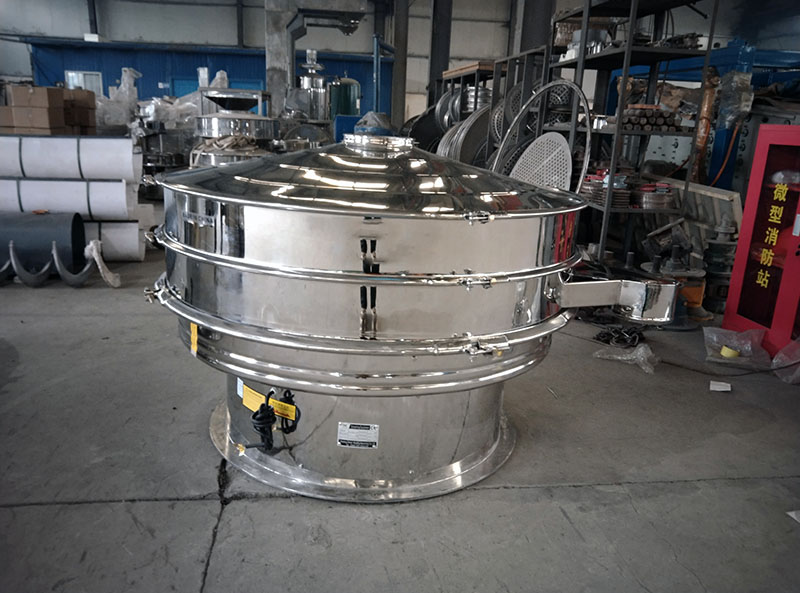
What types of Vibrating Filter Sieve are there?
According to the structure and function, Vibrating Filter Sieve can be divided into three types: standard type, 450 type, and high-frequency type. It can be selected according to the characteristics of the filtered material.
Standard Vibrating Filter Sieve
The vibrating sieve is the most widely used type of vibrating filter sieve. Its sieve diameter ranges from 400mm to 2000mm, and it can be configured with 1-5 layers of sieves to meet the classification requirements of different precision levels. The core advantage of this screening equipment lies in its versatility and high precision. It can handle a variety of materials from coarse particles to ultrafine powders. The screening accuracy can reach up to 500 mesh (28 microns), and the filtration fineness can even reach 5 microns. The output is 0.5-5 tons/hour.
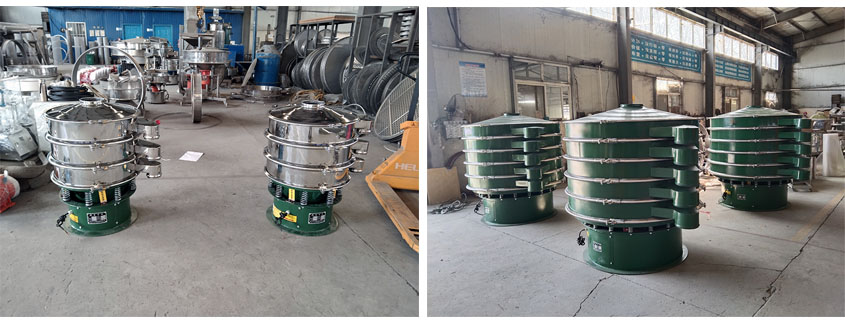
Features: multi-layer sieve (1-5 layers), closed structure to prevent splashing, and graded filtration.
Applicable materials: medium and low viscosity liquids with more impurities, such as paint, ink, traditional Chinese medicine liquid, and chemical slurry.

Case: Screening of spray paint in the coating industry, 325 mesh filtration volume 1200 liters/hour, fineness control to improve the gloss of the coating film.
450 Vibrating Filter Sieve
The 450 filter screen is a compact vibrating filter screen with a screen diameter of 450mm, designed for small and medium batch production, especially suitable for occasions with limited space or frequent movement of screening equipment. Applicable materials: low viscosity, small batch liquids, such as soy milk, juice, condiments, lightweight coatings.
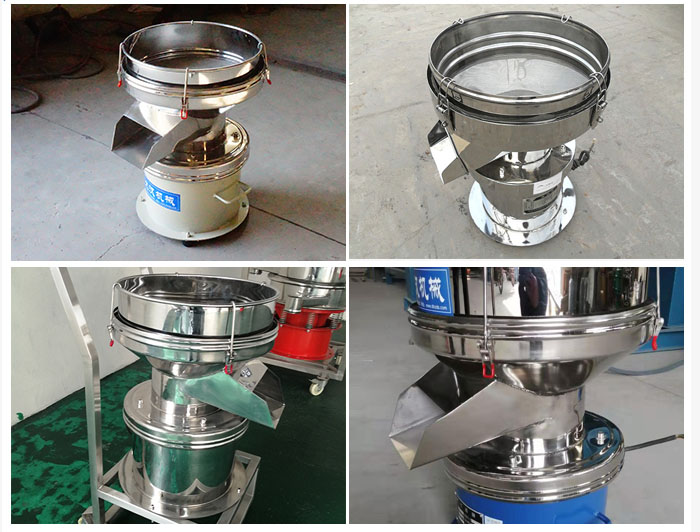
Features: single-layer design, 304 stainless steel material, small size, suitable for laboratories or small production lines.
Typical cases: processing 30 mesh flour up to 700 kg per hour, filtering 325 mesh spray paint up to 1200 liters per hour.
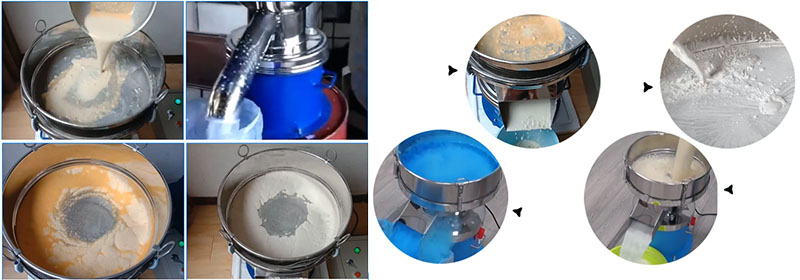
High-frequency Vibrating Filter Sieve
The high-frequency vibrating screen uses a high-speed motor of 3000r/min, a vibration frequency of 50HZ, and an amplitude of ≤2mm. It uses the "high frequency, low amplitude" vibration mode to specifically handle high-viscosity slurries that are difficult to filter with traditional screens. The disc-shaped design is convenient for observing materials without splashing. The laminated screen has a larger single-layer aperture, and the service life is extended by 2~3 times. It is equipped with a movable frame and can be moved at will in the workplace, and the height can be adjusted.
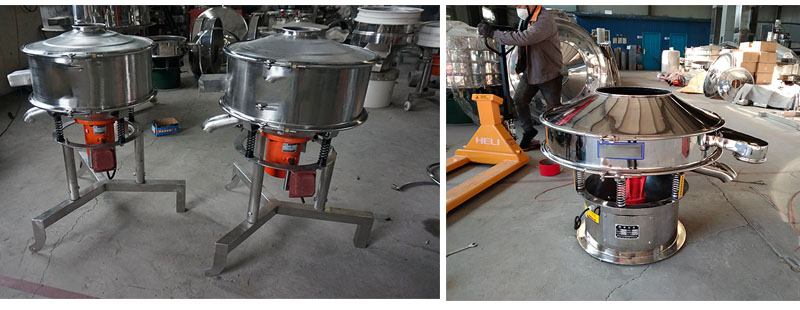
Applicable materials: high-viscosity, easy-to-block slurries, such as ceramic glaze, ore slurry, mud, and kaolin.
Features: 3000r/min high-frequency motor, low amplitude design, specializing in thick slurry dehydration.
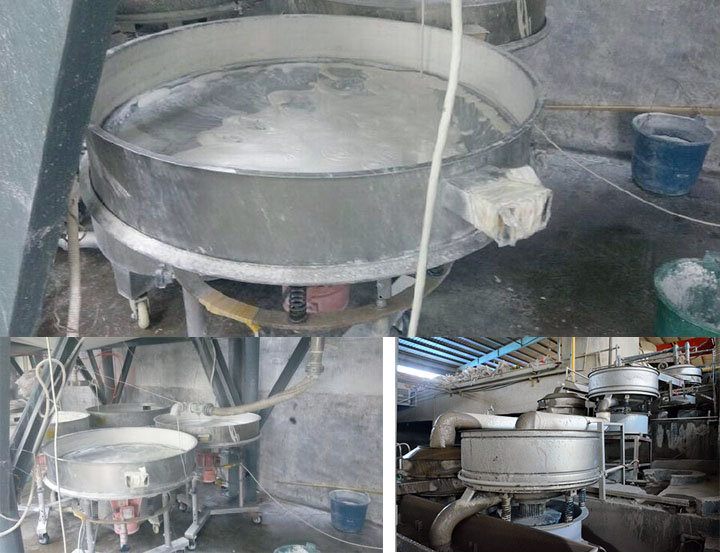
Case: Solid-liquid separation in coal mines, polyurethane screen is corrosion-resistant, and dehydration efficiency is increased by 40%
| Raw materials | Water content | Mesh | Screen usage time | Processing volume |
| Ceramic mud | 36% | 80 mesh | 15-30 days | 8-9t/h dry material |
| Electrical porcelain mud | 60% | 200 mesh | 30-40 days | 6t/h |
| Electrical porcelain mud | 60% | 300 mesh | 15-20 days | 1-2t/h |
| Electrical porcelain mud | 35% | 180 mesh | 15-20 days | 4-7t/h |
| Electrical Porcelain Slurry | 35% | 200 mesh | 15-20 days | 4t/h |
| Electrical Porcelain Slurry | 60% | 160 mesh | 15-20 days | 8-10t/h |
| Kaolin Slurry | 60% | 200 mesh | 20 days | 6-7m³ |
| Kaolin slurry | 60% | 250 mesh | 20 days | 5m³ |
| Kaolin | Dry powder | 120 mesh | 15 days | 2.5t/h |
| Sanitary ware glaze slurry | --- | 220 mesh/180 mesh | 30 days | 400kg/h |
| Ordinary semi-white glaze | --- | 150 mesh | 30 days | 1.4t/h |
| No. 3 glaze | --- | 140 mesh | 30 days | 650kg/h |
Why choose Vibrating Filter Sieve?
Vibrating Filter Sieve adopts high-frequency vibration design to greatly improve screening efficiency, with large processing capacity and high screening accuracy, and can quickly complete multi-level classification. The unique vibration structure effectively reduces screen blockage and extends the service life of the equipment. At the same time, the fully enclosed design prevents dust from spilling out and meets environmental protection requirements.
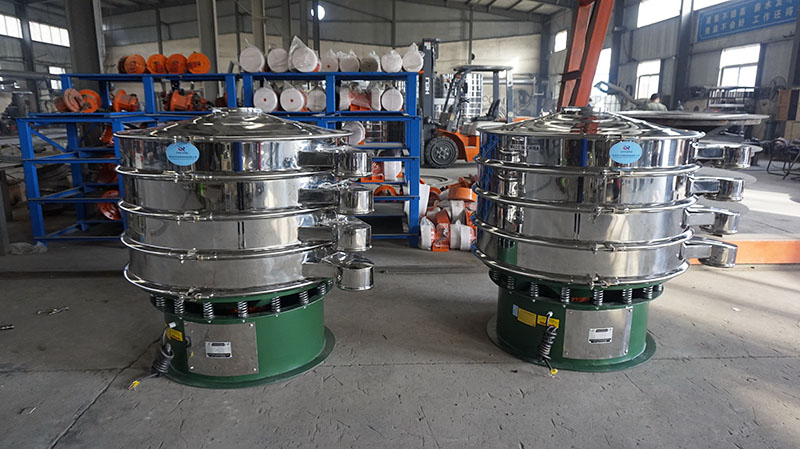
Anti-blocking net design: High-frequency screens and rotary vibrating screens use bouncing balls or ultrasonic cleaning to solve the problem of sticky material blocking holes.
Hygiene and safety: The food and pharmaceutical industries use all-stainless steel materials and silicone accessories to meet hygiene standards.
Efficiency doubled: The rotary vibrating screen has multi-layer classification, and a single machine completes filtration + impurity removal; the high-frequency screen pulp dehydration rate is 50% higher than that of traditional equipment
What is the principle of Vibrating Filter Sieve?
When Vibrating Filter Sieve is working, the excitation force is generated by the eccentric block of the motor, which makes the material vibrate in three dimensions (horizontally, vertically, and tilted) on the screen surface, and the fine material passes through the net and is discharged from the lower discharge port, and the coarse material is directly discharged from the slag discharge port.
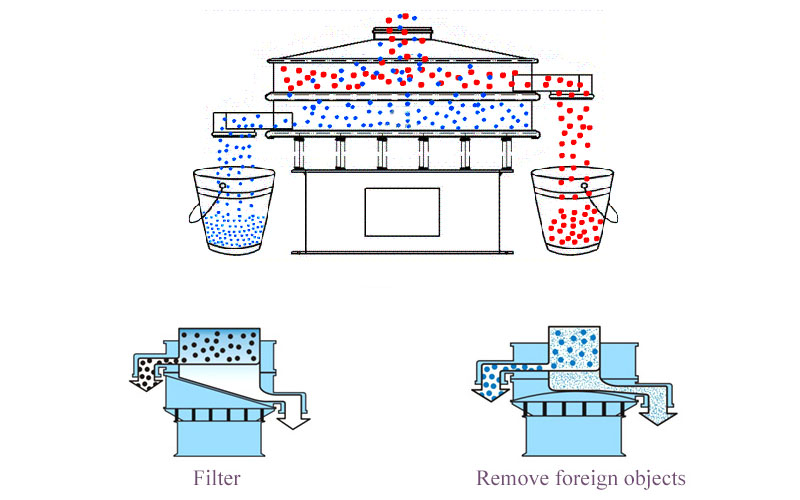
Vibrating Filter Sieve customer case
| Industry | Case | Problem description | Solution | Effect |
| Paint | Paint filtration and impurity removal | Agglomeration and impurities appear in production, affecting the spraying effect | Use 800 type rotary vibrating screen, equipped with 100 mesh screen, processing capacity 7500kg/h | Impurity removal rate >99.5%, production efficiency increased by 40% |
| Resin | Resin solution classification | Resin particles need to be classified into three levels of 40 mesh, 60 mesh, and 80 mesh | Use 1000 type three-layer rotary vibrating screen, equipped with corresponding mesh screen | Accurate classification, purity of each level of product reaches more than 98% |
| Food and beverage | Juice fine filtration | Freshly squeezed juice contains pulp fiber that affects the taste | 450 filter screen with 120 mesh screen, processing 600L per hour | Obtain clear juice and retain all flavor substances |
| Food and beverage | Seasoning sauce impurity removal | There are seed skins and crude fibers in chili sauce | High-frequency vibration screen with 60 mesh screen, processing capacity 2000kg/h | Obtain delicate sauce and improve product grade |
| Environmental protection | Dyeing and finishing wastewater reuse | Textile factory wastewater contains a large number of fibers and dye particles | 1500 type high frequency vibration screen with 20 mesh screen | Fiber recovery rate 90%, water reuse rate increased to 70% |
| Environmental protection | Food wastewater treatment | Food processing wastewater contains organic residues, direct discharge does not meet the standard | Rotary vibration screen with 150 mesh screen, processing capacity 3500kg/h | Removal rate 85%, subsequent processing load reduced by 60% |
How to choose a Vibrating Filter Sieve?
The Vibrating Filter Sieve can match the machine model according to the material characteristics to avoid efficiency waste:
Viscosity
For low viscosity (juice/pharmaceuticals), choose 450 filter screen: low cost and flexible movement.
For high viscosity (mud/glaze), choose high-frequency screen: small amplitude and forced drainage.
Impurities and classification requirements
For large particle impurities (paint/wastewater), choose rotary vibrating screen: the mother-and-child grid structure has strong bearing capacity.
For multi-level classification (traditional Chinese medicine powder), choose multi-layer customization of rotary vibrating screen: up to 5 layers of screen mesh with 6 particle sizes.
Production requirements
Small batch (<1t/h) → 450 type
Large-scale continuous production → rotary vibrating screen or high-frequency screen: support 24-hour operation
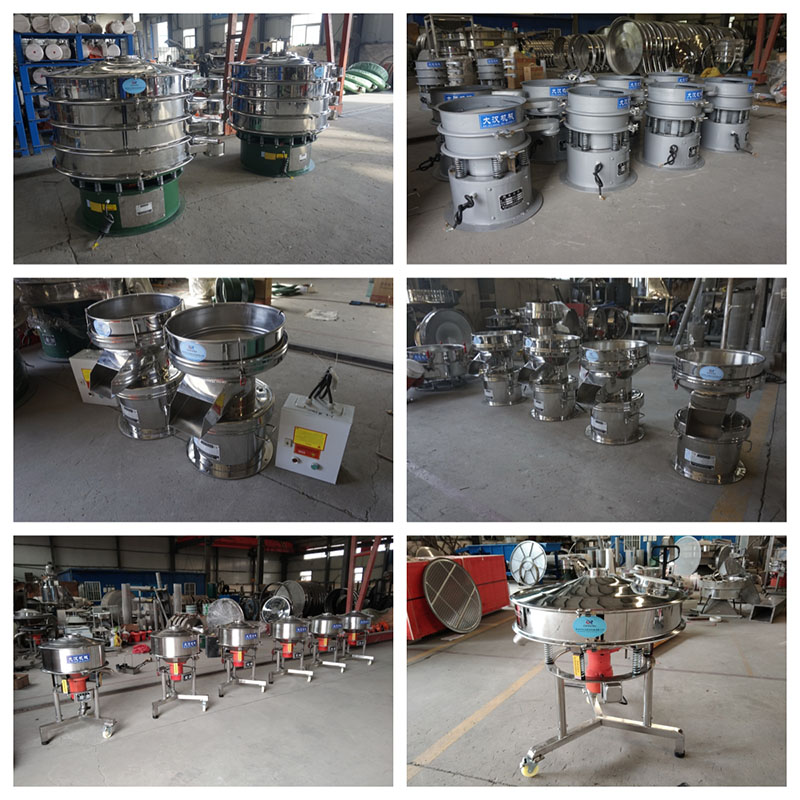
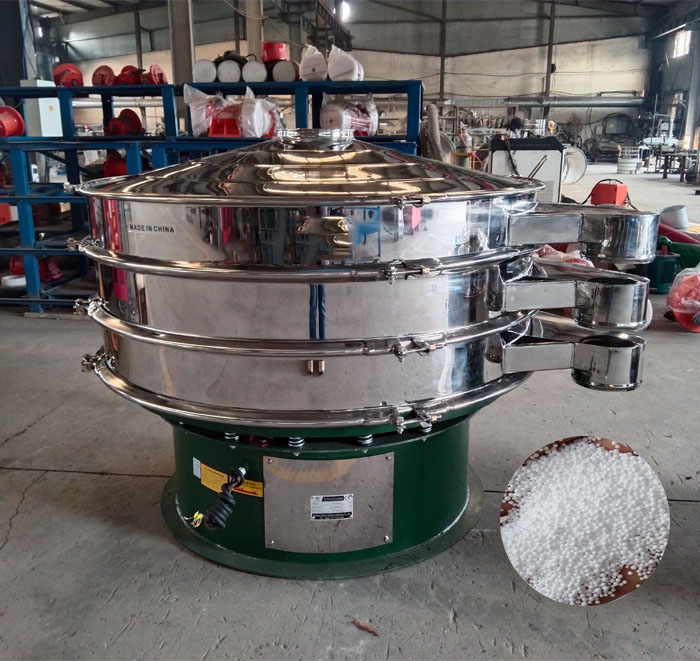 Sieve For Polystyrene Pellets
Sieve For Polystyrene Pellets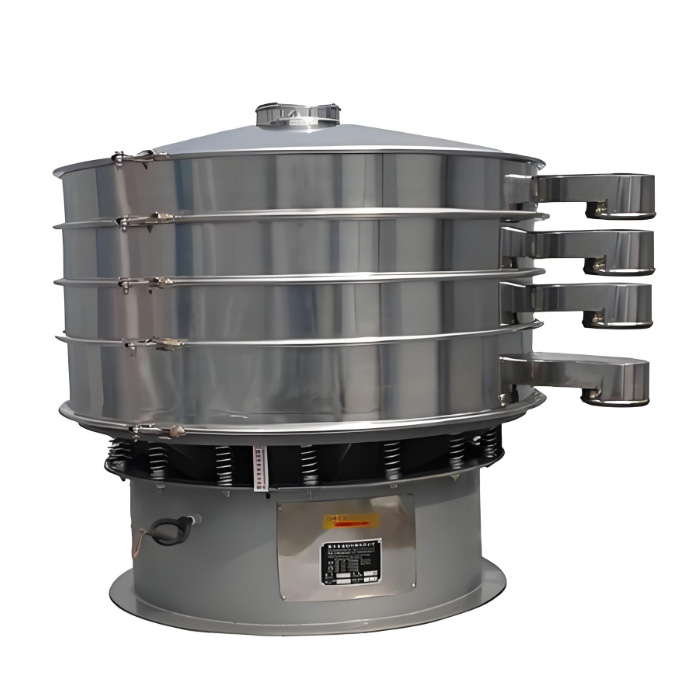 Foam Screening Machine
Foam Screening Machine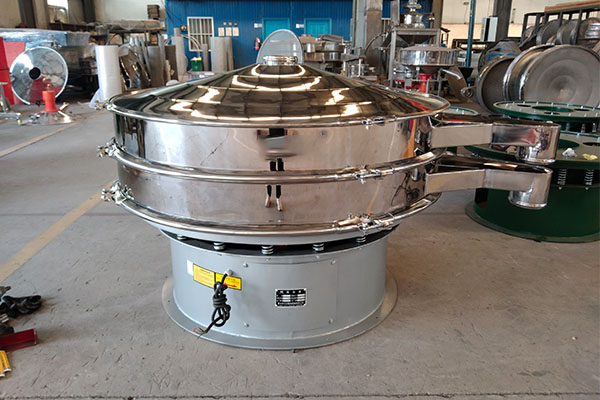 Solid Liquid Separation Equipment
Solid Liquid Separation Equipment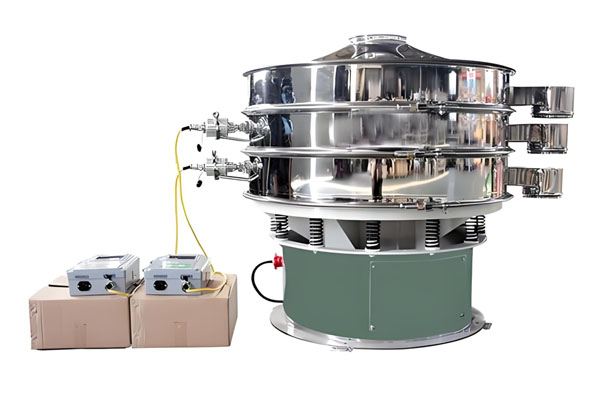 Ultrasonic Sieve
Ultrasonic Sieve